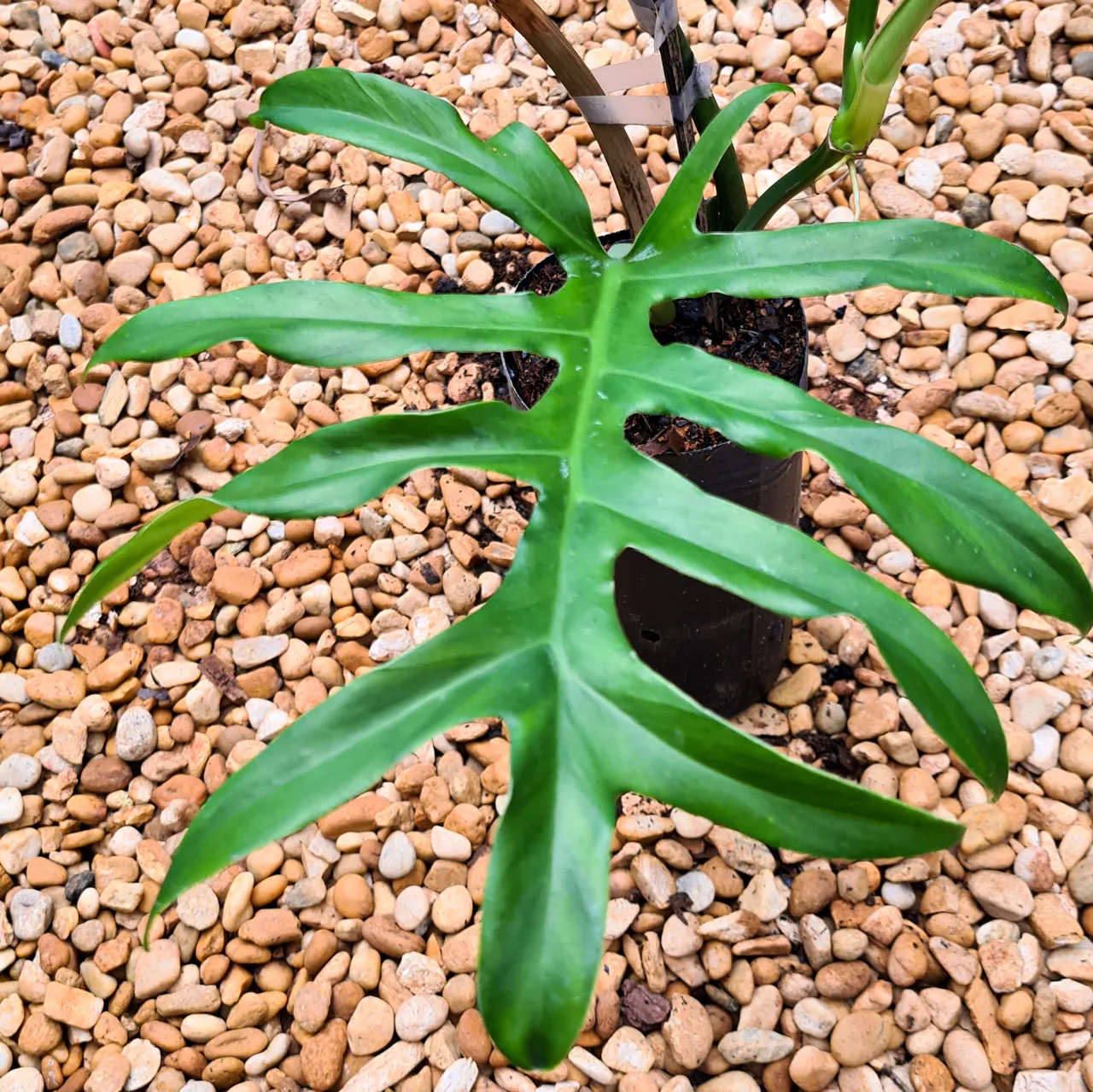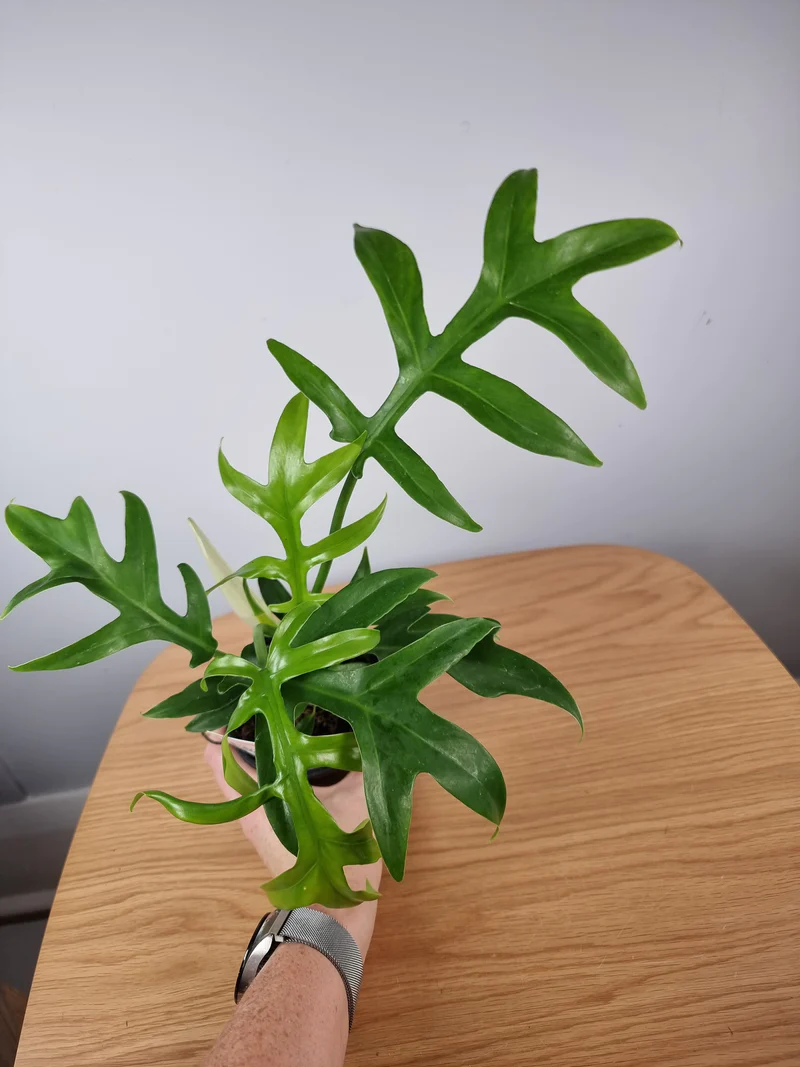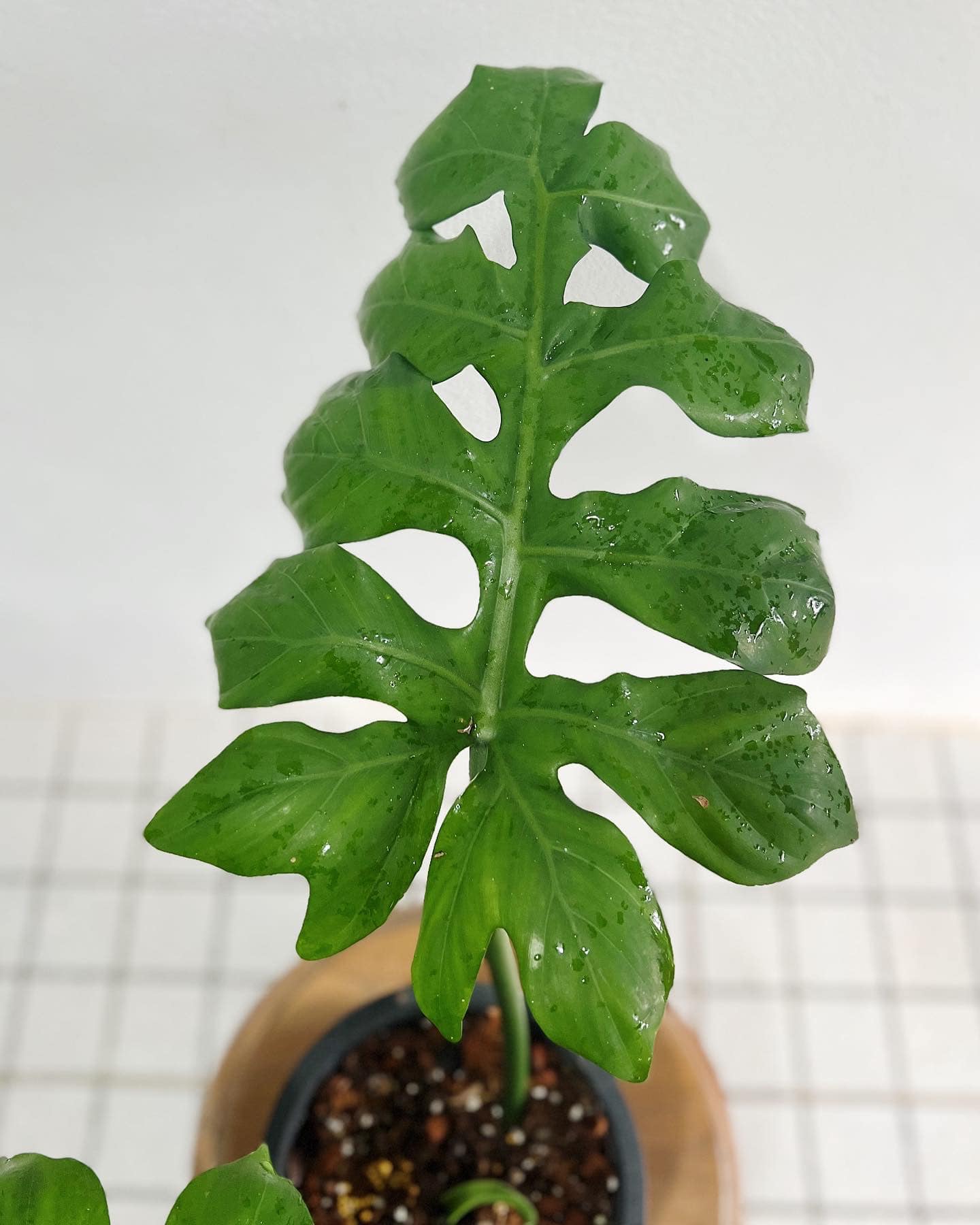Philodendron distantilobum, also known as the Spiny Philodendron, is a beautiful and unique species of flowering plant that is native to the rainforests of Central and South America. This plant is well known for its impressive foliage, which is adorned with long, spiky leaves and delicate blooms.
Introduction to Philodendron Distantilobum
Philodendron distantilobum is a stunning and rare species of Philodendron that is gaining popularity among houseplant enthusiasts and collectors. It is prized for its unusual, spiky foliage, which adds an exotic touch to any indoor garden. This plant is known for its ability to thrive in warm and humid conditions, making it an ideal choice for those looking to add a touch of the tropical to their homes.
Characteristics of Philodendron Distantilobum
The Philodendron distantilobum is a slow-growing plant that can reach up to 3 feet in height and 2 feet in width. Its leaves are long and spiky, growing up to 12 inches in length and 2 inches in width. They are a bright green color and are adorned with small, delicate blooms that grow from the center of the plant.

Why Choose Philodendron Distantilobum
Choosing the Philodendron Distantilobum for your home or office space comes with several appealing benefits:
- Unique Aesthetic Appeal: Philodendron Distantilobum is known for its distinctive foliage. Its elongated, heart-shaped leaves with deep lobes add a unique and exotic touch to any space, making it a standout piece in your plant collection.
- Air Purifying Qualities: Like many philodendrons, the Distantilobum is believed to have air-purifying capabilities. It can help remove indoor pollutants, providing a healthier environment in your living or workspace.
- Easy Care and Maintenance: This plant is relatively easy to care for, making it suitable for both experienced plant enthusiasts and beginners. It thrives in indirect light and requires moderate watering, making its upkeep manageable even for those with a busy lifestyle.
- Adaptability: Philodendron Distantilobum can adapt to various indoor environments. It can tolerate a range of lighting conditions (though it prefers bright, indirect light) and is relatively resilient to changes in its environment.
- Growth and Versatility: This plant can grow quite large, making it an excellent choice for filling up space or creating a green focal point in a room. Its climbing nature also makes it versatile – it can be trained to climb a moss pole or left to trail, depending on your preference and space.
- Emotional and Psychological Benefits: Like many houseplants, the Philodendron Distantilobum can contribute to reduced stress levels and improved mood, making it a great addition to spaces where relaxation and calm are desired.
- Rare and Collectible: For plant collectors, the uniqueness and less common nature of the Distantilobum make it a valuable addition to their collection.
How to Care for Philodendron Distantilobum
Philodendron distantilobum is a relatively low-maintenance plant that is easy to care for. Here are a few tips for keeping your Philodendron distantilobum healthy and happy:
- Light: This plant prefers bright, indirect light, but can tolerate lower light conditions. Avoid direct sunlight, which can scorch the leaves.
- Water: Water your Philodendron distantilobum regularly, making sure to keep the soil evenly moist but not waterlogged.
- Humidity: Philodendron distantilobum likes high humidity, so consider using a humidifier or placing a tray of water near the plant to increase humidity.
- Temperature: This plant prefers warm temperatures between 70°F and 85°F.
- Fertilizer: Fertilize your Philodendron distantilobum every 2-3 weeks during the growing season with a balanced, water-soluble fertilizer.

“Unleash the beauty of nature in your home with the Philodendron Distantilobum! Click now to bring this exotic plant into your space and transform your environment. Don’t wait, elevate your decor today!”
Where to buy Philodendron Distantilobum? Benefits from importing plants from Thailand
- Shipping: Door to door shipping, fast and safe with Dragon Courier
- Biodiversity: Thailand is known for its rich biodiversity, including a wide variety of aroid species. This diversity allows importers to access a broad range of unique and exotic aroid plants.
- Quality and Health of Plants: The suitable climate helps the plants grown here stay healthy and of high quality.
- Cost-Effectiveness: Due to favorable growing conditions and efficient production methods, Thai aroid plants can often be more cost-effective compared to those from other countries.
- Access to Hybrid Varieties: Thai growers are often involved in the development of new hybrid aroid varieties, offering unique plants that may not be available from other sources.
Philodendron species are the most sought after by aroid plant lovers
Propagating Philodendron Distantilobum
Philodendron distantilobum is easy to propagate from stem cuttings. Simply take a stem cutting that is at least 6 inches long and has a few leaves, and plant it in a pot filled with well-draining potting soil. Keep the soil evenly moist and place the cutting in a warm, bright location. In a few weeks, roots will form and new growth will begin to emerge.
Diseases and Pests Affecting Philodendron Distantilobum
Like all plants, Philodendron distantilobum is susceptible to a few common diseases and pests. Here are a few to look out for:
- Root rot: This can occur if the plant is over-watered or if the soil is not well-draining. To prevent root rot, make sure to water your plant regularly but not excessively, and use a potting mix that drains well.
- Spider mites: These tiny pests can cause yellow or brown spots on the leaves of your Philodendron distantilobum. To control spider mites, spray the plant with water or use an insecticide.
- Mealybugs: These pests can cause leaves to become yellow and stunted. To control mealybugs, use an insecticide or remove the pests by hand with a cotton swab dipped in rubbing alcohol.

Conclusion
Philodendron distantilobum is a beautiful and unique species of flowering plant that adds an exotic touch to any indoor garden. With its bright green, spiky foliage and delicate blooms, this plant is sure to impress. With proper care and attention, Philodendron distantilobum can thrive and bring joy to its owners for many years to come.
FAQs
- Can Philodendron Distantilobum be grown outdoors? While Philodendron distantilobum is native to the rainforests of Central and South America, it can be grown outdoors in warm, humid climates.
- How often should I water my Philodendron Distantilobum? It is important to water your Philodendron distantilobum regularly to keep the soil evenly moist. It is recommended to check the soil moisture level every few days and water as needed.
- What is the ideal temperature for Philodendron Distantilobum? Philodendron distantilobum prefers warm temperatures between 70°F and 85°F.
- How long does it take for Philodendron Distantilobum to bloom? Philodendron distantilobum blooms once a year, typically in the spring or summer.
- How do I propagate Philodendron Distantilobum? Philodendron distantilobum can be easily propagated from stem cuttings. Simply take a stem cutting that is at least 6 inches long and has a few leaves, and plant it in a pot filled with well-draining potting soil. Keep the soil evenly moist and place the cutting in a warm, bright location. In a few weeks, roots will form and new growth will begin to emerge.





















